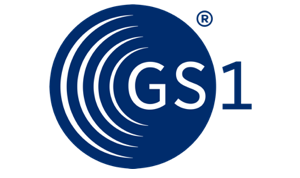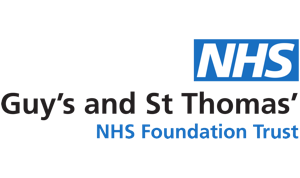How Smart Technology is Revolutionising Fire Risk Management
Fire safety is a fundamental concern for large estates, such as hospitals and universities, where complex buildings, and high occupancy levels create unique fire risks. Managing fire risk assessments (FRA) across such vast institutions is a major challenge, requiring continuous monitoring, risk mitigation, and compliance with stringent regulations such as the Regulatory Reform (Fire Safety) Order 2005.
How Technology is Transforming Compliance in Hospitals & Universities
The complexity of these environments demands a comprehensive and systematic approach to fire risk management. Traditionally, paper-based assessments and manual reporting were the norm, leading to inefficiencies, compliance gaps, and delayed responses to fire hazards. Today, smart technology solutions are transforming the landscape by automating fire risk assessments, integrating remedial actions with FM (Facilities Management) systems, and providing real-time compliance oversight.

In this article, we explore:
- The specific fire safety challenges faced by hospitals and universities
- How primary and secondary fire risk assessments work in large estates
- The limitations of traditional fire risk assessment methods
- How technology-driven solutions improve compliance, safety, and efficiency
The Unique Fire Safety Challenges in Hospitals and Universities
Hospitals: A High-Risk Fire Environment
Hospitals present a unique and highly complex fire risk profile due to:
- Vulnerable occupants – Many patients are immobile, elderly, or in intensive care
- High ignition risks – Electrical medical devices, oxygen-enriched environments, flammable chemicals
- Compartmentation issues – Fire doors, pressurised escape routes, and evacuation strategies must be robust
- Critical operations – Fire incidents must be managed without disrupting patient care
A fire in a hospital requires strategic and carefully executed evacuation plans, as moving critically ill patients quickly is not always an option. Ensuring that fire risks are minimised, detected early, and managed efficiently is critical for both patient safety and regulatory compliance.
Universities: Large Estates with Complex Compliance Needs
Universities face a different set of fire safety challenges, including:
- Multiple buildings across large campuses – Managing fire risks across different faculties, research labs, student accommodation, and libraries
- High occupant turnover – Students, staff, and visitors frequently change, increasing the need for robust evacuation plans
- High-risk zones – Laboratories with hazardous chemicals, kitchens in student halls, and high-density lecture theatres
- Compliance across departments – Coordinating fire risk management across different faculties can be difficult
With thousands of students, academic staff, and support personnel, universities require dynamic fire risk management systems that ensure full compliance across multiple locations.
Primary vs. Secondary Fire Risk Assessments in Large Estates
Primary Fire Risk Assessments (FRA): Hospital & Campus-Wide Compliance
A primary FRA is conducted at the institution-wide level, evaluating general fire risks, evacuation procedures, fire safety policies, and compliance standards.
Key Objectives of a Primary Fire Risk Assessment:
- Assessing fire hazards across an entire hospital or university campus
- Ensuring compliance with legal fire safety regulations
- Identifying high-risk zones that require secondary fire risk assessments
- Evaluating fire safety measures, including fire doors, extinguishers, sprinklers, and evacuation routes
Primary FRAs provide an overview of fire risks across all departments, buildings, and zones but do not provide the level of detail required for specific high-risk areas.
Secondary Fire Risk Assessments: Department-Specific Evaluations
A secondary FRA is more detailed and focuses on specific high-risk areas within a hospital or university. These assessments are critical for departments with unique fire hazards, such as:
In Hospitals:
- Intensive Care Units (ICU) – Oxygen supply risks
- Operating Theatres – High-energy equipment
- Laboratories – Flammable substances and hazardous chemicals
In Universities:
- Science Labs – Chemical storage risks
- Student Accommodation – Kitchen fires and electrical overloads
- Libraries & Archives – Paper-based fire loads
Why Secondary FRAs Are Important:
- Provide a detailed breakdown of fire hazards in critical areas
- Ensure that evacuation plans account for specific department risks
- Help prioritise remedial actions to mitigate high-risk scenarios
- Both primary and secondary fire risk assessments must be regularly reviewed and updated to ensure continuous compliance.
Why Traditional Fire Risk Assessment Methods No Longer Work
For years, hospitals and universities relied on manual, paper-based fire risk assessments, leading to:
- Delays in identifying and resolving fire risks
- Incomplete or lost documentation
- Compliance gaps that increase regulatory exposure
- Difficulty in tracking remedial actions
The sheer scale of modern hospital estates and university campuses makes manual fire risk assessments inefficient and high-risk.
Expert Insight
As a Customer Success Manager at Micad, Jack Heappey is dedicated to helping clients in the NHS, Education, and private sectors maximize the value of their estate management software. With extensive experience in the implementation of software solutions for Fire Risk Assessments (FRA) across both the NHS, Education sectors and service providers, he ensures proper setup, drives value, and streamlines operations. His expertise allows clients to optimise their processes efficiently and effectively.
As Jack Heappey, Customer Success Manager at Micad, explains:
“Paper-based fire risk assessments no longer meet the needs of large, complex estates. Compliance teams need real-time visibility, automation, and full integration with their FM systems to ensure fire risks are properly assessed, actioned, and resolved in a way that is both efficient and fully auditable.”

How Smart Technology is Transforming Fire Risk Management
Platforms like ZetaSurvey and ZetaSafe are revolutionising fire risk assessments and compliance management by providing a fully digital, automated, and integrated system.
Digitised Fire Risk Assessments
- Fully customisable form-based question sets with photos, GPS data, digital signatures
- Mobile and tablet-based real-time data collection
- Auto-generated reports instantly stored in ZetaSafe
Why It Matters:
- Standardised reporting across all departments
- Eliminates human error in manual data entry
- Ensures assessments are always accessible and auditable
Expert Insight:
Jack Heappey, Customer Success Manager at Micad, highlights the flexibility of ZetaSurvey:
“One of the key advantages of ZetaSurvey is its ability to be fully customised to suit the needs of different organisations. A service provider may prefer a simple yes/no questionnaire for efficiency, while in-house compliance assessors may require open-ended questions to explore risks in greater depth. This flexibility allows fire risk assessments to be tailored to the specific operational needs of each organisation, ensuring they can take a holistic approach to fire safety. By adapting the survey structure, organisations can not only identify fire risks but also assess their wider implications, making fire safety a more proactive and strategic process.“
Automated Remedial Actions & FM System Integration
- Any fire risk automatically generates a remedial action
- Jobs are immediately assigned to FM teams via Micad FM
- Job completion updates are synced back to ZetaSafe, closing the compliance loop
Why It Matters:
- Ensures fire safety risks are addressed without delays
- Eliminates manual job tracking and human error
- Provides a fully auditable compliance record
Expert Insight
As Jack Heappey emphasises:
“The biggest challenge in fire risk management isn’t just identifying issues—it’s making sure they are actioned. By automating the flow between fire risk assessments, remedial actions, and FM teams, we ensure that no risk goes unresolved and that compliance is always trackable.”
The Future of Fire Risk Management: Fully Integrated & Automated
Hospitals and universities can no longer afford to rely on outdated manual processes for fire risk management. By leveraging ZetaSurvey and ZetaSafe, organisations can:
- Eliminate paperwork and streamline fire risk assessments
- Automate remedial actions and track them in real-time
- Ensure FM teams resolve fire risks quickly and efficiently
- Monitor compliance with real-time dashboards
- Provide audit-ready reports for regulators
Are you ready to revolutionise your fire risk management? Contact us today for a demo of ZetaSurvey & ZetaSafe!
Want to Dive Deeper?
We’re hosting a webinar on day February 27 th at 10 am to discuss these challenges and innovations further. Don’t miss the opportunity to learn how ZetaSurvey can play a vital role in managing Fire Risk Assessments.
Sign up for our upcoming webinar now!
Please note: The information provided in this blog is for informational purposes only and should not be interpreted as professional fire safety, legal, or compliance advice.






